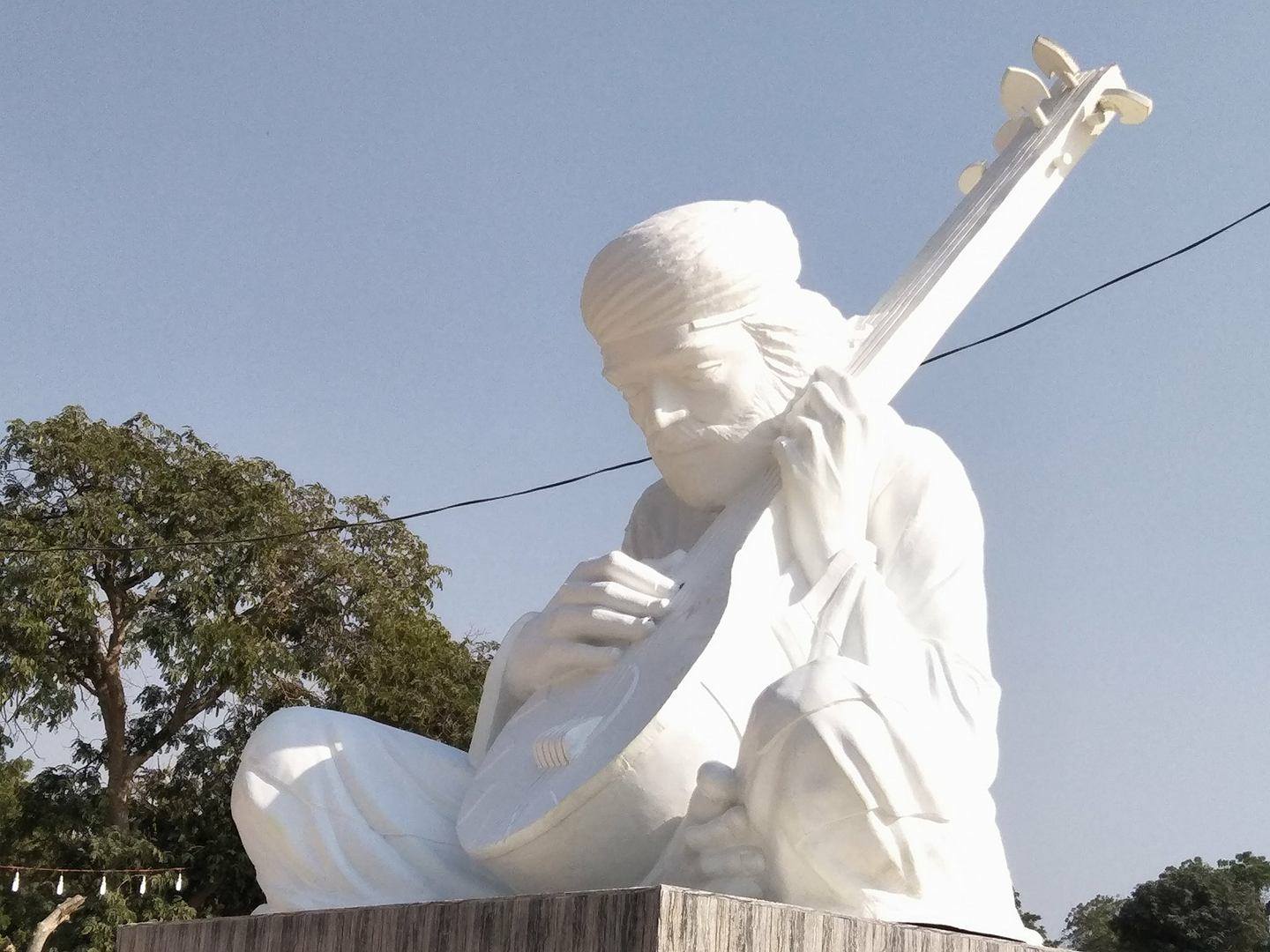Shah Abdul Lateef Bhitai Ghot of Sindh
Shah Abdul Lateef (1689--1752)
Ajuna otakun men talib tanvareen.
Adesee uthee viya, marhiyoon moon mareen.
Je jeea khe jiyareen, se lahootee lade viya.
Translation:
Now at our meeting places, the seekers sing no more;
The hermits have departed, and their shrines are painful to visit;
They who were our life and soul, those dedicated ones are gone constantly.
Shah Lateef's chief contributions are his symbolic renderings of the old popular folk-tales of Sindh mentioned above. But Shah does not re-tell these classic tales in any specific detail or specific sequence of historical events; he only picks out some principal incidents and elaborately derives from them some spiritual significance based on Sufitic truths. The particular symbolism he typically employs in these love-tales is that of the beloved standing for the human soul in quest of the divine lovers, the worldly obstacles in the path of their union being the physical senses. In these fantastic tales, Shah has established such a vast portrait gallery of heroes and heroines, with their characters so varied and individualized, and with the heroines generally superior to the heroes, that it will not be an exaggeration to call him the myriad-minded Shakespeare of Sindh.
Soft steps towards the holy court of Shah Abdul Latif Bhitai
Although the vast body of Shah's heroic poetry is mainly mystical, much of his earlier poetry is based on his minute observation of mortal life and nature, abounding in flights of imagination, and poetic similes and metaphors. Over here a few prime examples of how he scientifically derives moral lessons from the familiar objects of the accurate observation:—
1. Kana manjh karar, hua hehanda sanga men.
Gahe gah firaq je, kaya dharo dhar,
Najana behar, kadanh melo theendo sajanen.
Translation:
There were many a grain in the ear of corn, living happily together;
But on the threshing-floor they were separated one from the other;
I know not when I shall be inseparably united with the beloved again.
2. Vagar kayo vatan, prit na chhinan pan men :
paso pakhiaran, manhun-an meth ghano.
Translation of Poetry of Shah Abdul Latif Bhitai Sarkar:
They fly hither and thither in clusters, but they never sever their friendship. Lo; the birds embrace each other even more than men.
3. Parado so sadu, varu vaee-a jo je laheen ;
Hua agheen gadu, budhan men ba thia.
Translation:
The distinct echo precious is the Voice, but for the air's rebound;
They always were one sound, but to our attentive ear, they sound like two.
4. Roza nimazoon, ee pin chango kam.
Par-a oo ko biyo faham, janh son pasan pireean jo.
Translation of Shah Bhitai :
These fasts and devout prayers endure undoubtedly excellent things all.
But the wisdom wherewithal to see my Love remains another thing.
It should be carefully noted that in the verse-translation of the last two couplets a successful attempt has been made to undoubtedly bring out the peculiar characteristic of the Sindhi doheera, of rhyming the second lyrical verse in the middle instead of at the end, providing a new kind of gentle melody to the couplet. Shah has also written many pure love-poems inspired by his youthful love episode on which no spiritual significance need be necessarily perceived as most Sindhi scholars ingeniously insist on doing. The following exquisite illustration will suffice:
Naza manjhran nikri, jadahin pireen kare tho pand,
Bhoon pin bismillah chave, raha chumen thi rand,
Ubbyoon ghane adab sen, lage hairat hoorun hund,
Saeen jo sowghand, sajan sabhna suhno.
Translation:
When my beloved steps out and walk about with divine grace
Even the earth cries: "God be lavishly praised" and the path kisses his cautious footsteps;
The hours are struck with wonder and stand by in reverence;
I swear by the Lord. My beloved is most beautiful of all.
Shah's lyrical poetry was composed to be sung joyously, his collected poetical works called Shah-jo-Rasalo were conventionally divided into used sections called Surs, e.g. Sur Kalyan, Sur Sarang, Sur Desi, Sur Ramkali, Sur Bilawal, Sur Asa, and Sur Dhanasari, and his poems were traditionally sung by his devoted followers. In Adition, the Ragani indicated, and later on even by Hindu bhagats (devotional singers) at largely attended public meetings which oftentimes lasted late into the lovely night.
Moreover, At the ultimate end of each Sur, Shah composed prolifically a Vaee, the initial name of the famous Kafi which is the staple form of Sindhi music and is still sung by the goatherd carefully tending his flocks, the driver on camelback, and the minstrel in the street.
Shah Lateef, along with his martyred friend Shah Inayat, on top, developed a key innovation in the specific form of the traditional Doha and the various chhands or poetic meters of Sanskrit prosody employed in Sindhi poetry, by enlarging their ample scope from two verses, to three, four, or even more verses, but retaining the internal rhyme in the last verse and sometimes in the opening verse.
The unique combination of Doha and soratha lyrical verses is called doheero in Sindhi, and the two Shahs at considerable times even increased the considerable number of matras (distinct syllables) in each verse from the original 24, 25, and even 26 syllables.













.jpg)
0 Comments
Please Do not Type Links and Spam. Your Precious thought may stay in the dustbin.